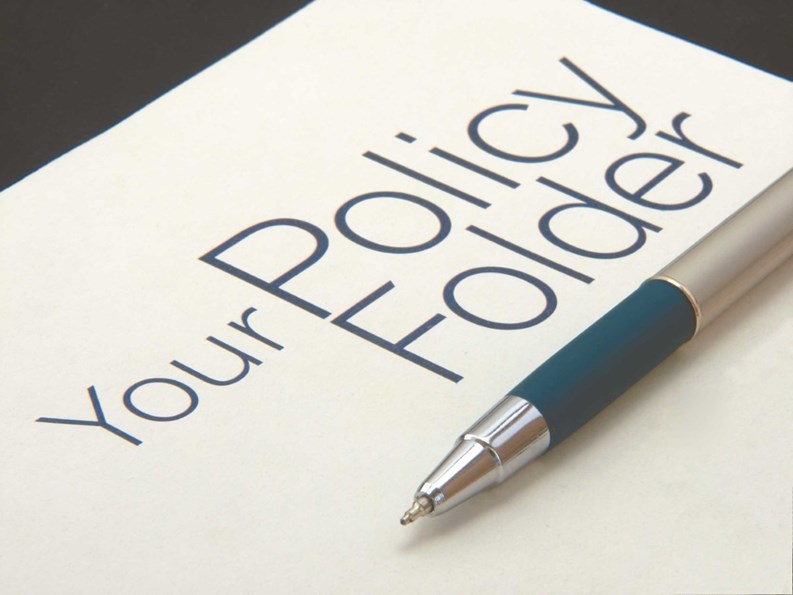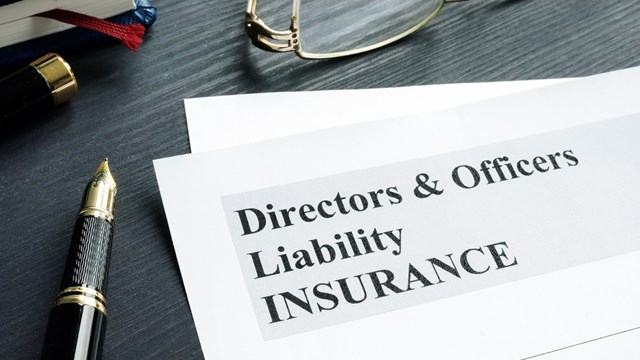Common sense notwithstanding, a lot of co-op and condo owners don’t have the adequate liability and property insurance they should have. Too often they assume that their building association has insurance coverage that will automatically cover their personal possessions in case of an accident or negligence.
Generally speaking, they’re mistaken. The insurance that the building has for covering catastrophic damage to common areas—such as structural damage caused by fire, wind, and flooding—as well as “slip-and-fall” negligence claims doesn’t necessarily extend all the way to a resident’s personal property. In most cases, your building’s policy is not going to cover your grandma’s heirloom table or the original Annie Leibovitz limited edition photograph it’s propping up.
Knowing the Score
If you’re a board member and feeling smug right now because you’re absolutely certain that every unit owner in your building has more than enough insurance coverage to protect both themselves and your community in the event of a mishap or disaster, you may be in for a rude awakening. The fact of the matter is that while prospective buyers may be required to show proof of insurance in good standing at the time of closing, monitoring whether or not that coverage is up-to-date and adequate is another matter entirely.
“Sometimes, what we have found is that the unit owners think the association’s policy covers everything, and that is a false impression,” says Greg Blair, a partner with Nottingham Insurance in Hamilton Square. “A lot of times they just think the certificate they get at closing, which shows property coverage, covers everything. When in fact… it only covers the common areas of the association, the common property, such as clubhouses.”
Blair continues, touching upon the difficulty of boards keeping track of exactly which unit owners have what coverage, saying,
“Most associations do not require the unit owners to show proof of coverage. So, even though the condominium or co-ops are insured under the association’s policies, it’s up to each individual owner of the unit to cover [his/her] own contents, and any improvements or betterments to the unit… The problem that we find is that most associations never require the tenants to show that proof to the property manager or the association board. So, unfortunately, you [often] don’t find out if they have it until the loss occurs.”
Think Like a Homeowner
“It’s important for co-op and condo owners to think like a single family homeowner when it comes to having adequate insurance protection,” advises William Cooper Colwell, a New Rochelle- based insurance agent, who owned a co-op and served as its association’s president before he and his wife bought a single-family home. “All of the usually unpredictable happenstances that can negatively impact the property of a single family home can also impact a co-op or condo owner.”
So while a single-family home owner probably has less risk of suffering damage from their neighbor’s erupting toilet bowl, a leaky roof in a condo or co-op may not only cause damage to the building but it can also damage your personal belongings, says Colwell.
“Your co-op or condo association’s master insurance policy should cover any damage suffered by the building’s structure and common public areas. However, it will not cover water damage that your home furnishings and other personal belongings may suffer as a result of this leak. Therefore, the purchase of a separate co-op or condo personal insurance policy is critical,” he cautions.
According to Colwell, the same coverage guidelines that apply to structural damage also apply to liability coverage. A “slip-and-fall” in the building’s common lobby should be covered by the building’s master policy. “But if the injured party was in the building specifically to visit a friend, the friend also might be held liable for damages. And if the accident and injury takes place within the four walls of your unit, you’re definitely exposed—another reason for having your own personal insurance policy,” adds Colwell.
But before you go shopping for personal insurance coverage, review your co-op or condo association’s bylaws to see what is covered or not covered by your association’s master policy.
“Bylaws define what’s a common element, which is the association’s responsibility, and what are the elements that are the responsibility of the unit owner,” in terms of insurance coverage, says Blair.
Obviously, where the building’s policy does not cover damage, is where the unit owner needs to consider additional insurance to cover his or her individual unit.
“A condominium policy only provides coverage for…improvements and betterments, which are the things that the unit owner does to the building after they move in,” says Christopher Perry, an account manager with Brown & Brown of New Jersey, Inc., a Phillipsburg-based insurance company.
“So, if… there’s a water damage loss and a pipe bursts inside the wall, the insurance company is going to come out; they’re going to tear down the wall; they’re going to replace the wall, and the association insurance is going to put back the sheet rock and the primer.” However, if the unit owner’s paint or wallpaper is damaged, most likely it’s only going to be covered by a personal policy.
Borders and Boundaries
In hopes of preventing big losses for owners who are under-insured, many companies and agents try to make sure they are educated and do not let their insurance policies slip through the cracks.
“We do a great deal of educating our unit owners on the need to have personal insurance,” says Blanche Adams, vice president of marketing for Thomas Heist Insurance in Ocean City. Adams explains the need to have insurance coverage for personal property and the interior of the unit, for liability, and building coverage. And obviously, it is important to avoid letting your insurance lapse.
In addition to maintaining coverage, it is also important to review and upgrade coverage as alterations and improvements are made to the co-op or condo.
According to Blair, this reassessment usually happens annually. “At each renewal, the insurance company puts out a new offer to renew, and at that time usually the boards review their insurance to make sure that the limits are adequate and that the coverage is adequate with their agent,” he says.
As soon as a unit owner makes changes to the unit, whether it be installing new flooring, painting the walls, or bringing in some new granite counter tops, the alterations becomes your personal property, not the building’s. If damage is caused to the original structure (through no fault of your own), typically this is covered by the building. But if the original structure had linoleum floors, you may be out of luck if water from a burst pipe turns the parquet floor you installed into paper-maché.
“The bylaws of each association are different,” says Blair. “The most common is what they call ‘drywall out,’ which means that if a loss occurs, like a fire, the condominium association’s policy will come in and build the structure, all the way up to the drywall. And then the unit owner would be responsible for completing the unit—putting in appliances and carpeting and paint—and they should have an insurance policy to cover that. But again, it is really dictated by the bylaws of the association. If an owner of a condo unit wants to really know what’s covered if a loss were to occur, they need to refer to the bylaws of their condo association.”
Talking About Costs
However you slice it, homeownership is an expensive proposition—and it may cost you more than you think if your credit is not up to par. Many insurance underwriters interpret bad credit as an indicator of a less responsible homeowner, and adjust their premiums upward accordingly.
According to a study conducted by Conning Research & Consulting, a management and analysis company that services the insurance industry, more than 90 percent of insurance companies look at an applicant’s credit rating before writing homeowners policies and setting premiums. Statistics show a direct correlation between one’s bill paying habits and other signs of responsibility—or lack of responsibility—in one’s life. For example, people who pay their bills on a timely basis have been proven to have a reduced likelihood of filing homeowner’s or automobile insurance claims. And when a claim is filed, it tends to be smaller in size.
The insurance industry uses a FICO (Fair Isaac and Company) risk-scoring model similar to a credit rating model report. It weighs, in order of importance, past credit card payment history, amount of credit owed, length of time credit has been established, newly-opened lines of credit, and the number and types of outstanding credit, including installment loans and mortgages. The primary difference between the two models is that the insurance industry is more concerned about how likely you are to pay your bills, not how many bills that you have to pay, or how much you owe. It equates paying bills on time with good judgment and simple common sense. And the more common sense that an individual demonstrates in handling money, the less likely he or she is to file a claim—or so the industry’s reasoning goes. That’s because using common sense practices while in your home may reduce or altogether eliminate filing insurance claims. A “clean record” of not filing claims for 39 months or longer can help eradicate a previous high-risk insurance record.
While insurance companies start with the basic FICO report model, each company modifies it to fit its own specifications. That’s why a customer can receive an “excellent” rating from one company and only a “good,” “fair” or even “poor” rating from another company, even though every insurance company is dealing with the same credit history information!
As with most other things in life, if the price quoted for condo or co-op insurance by a discount insurance company is drastically lower than other quotes received from nationally respected companies, chances are it falls under the category of “you get what you pay for.”
The truth is, most people who are not insurance professionals by trade don’t know what questions to ask about the type of coverage they need, or where their own coverage intersects with their building’s. Finding out when filing a claim that one’s coverage is not adequate, or not of the right type adds insult to the injury. That’s why it’s so important for boards and managers to know their coverage inside and out, and make sure the policies they have are properly maintained.
Hannah Fons is an associate editor of The New Jersey Cooperator. Freelance writer Rob Seitz contributed to this article. M/em>







Leave a Comment